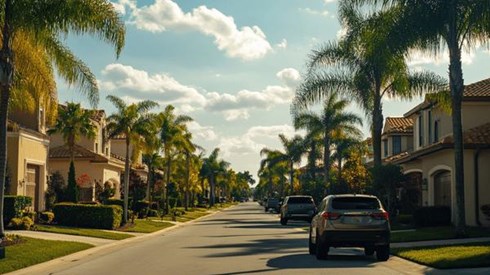Florida Property Insurance Market Turns Profitable After 8 Years

May 30, 2025

Florida's personal property insurance market posted its first underwriting profit in 8 years, driven by stabilizing premiums, rising competition, and significant legislative reforms, according to a new report from AM Best.
The AM Best's Market Segment Report, Florida's Property Insurance Market Showing Stabilization Following Volatility, Sharp Premium Increases, found that the state's property/casualty environment is showing signs of improvement following years of volatility. In 2024, active Florida property insurers reported a combined ratio of 93.1 and an underwriting gain of $206.7 million—reversing a $174.4 million loss in 2023. Pre-tax operating income surged to $492.3 million, up from just above breakeven the previous year.
The report excludes Citizens Property Insurance Corporation, the state-run insurer of last resort, and national affiliates, focusing instead on 45 specialist insurers active in Florida. The analysis also incorporates data from firms that have merged or become impaired to reflect historical accuracy.
Josie Novak, senior financial analyst at AM Best, said, "Florida's legislative reforms acted as a material tailwind for longstanding participants but also improved the environment to attract new entrants, effectively increasing capacity."
Reforms enacted in 2022 targeted legal challenges and excessive litigation that had previously hampered insurer performance. The 2024 session introduced a law allowing excess and surplus lines insurers to offer coverage for seasonal homes without homestead exemptions, provided they hold at least an A− (Excellent) rating from AM Best. The 2025 session has already seen the passage of additional legislation designed to improve excess and surplus market access for agents and consumers.
Despite the positive financials, the report highlighted persistent structural risks. Florida specialists had a direct premiums written-to-surplus ratio of 3.2x in 2024, compared with 1.7x for the US personal property composite. Reinsurance leverage remains elevated, with a 519.4 percent ceded reinsurance ratio versus the national average of 62.2 percent, reflecting the heightened catastrophe risk in the state.
Chris Draghi, director at AM Best, said, "Looking ahead to midyear renewals, the balance of power appears to be shifting toward primary [insurers]. Given that loss activity has been more moderate in recent years and profitability has stabilized, Florida composite companies are now in a better position to manage risk accumulation and potentially negotiate more favorable terms with reinsurers."
Copyright © 2025 by A.M. Best Rating Services, Inc. and/or its affiliates. ALL RIGHTS RESERVED.
May 30, 2025
